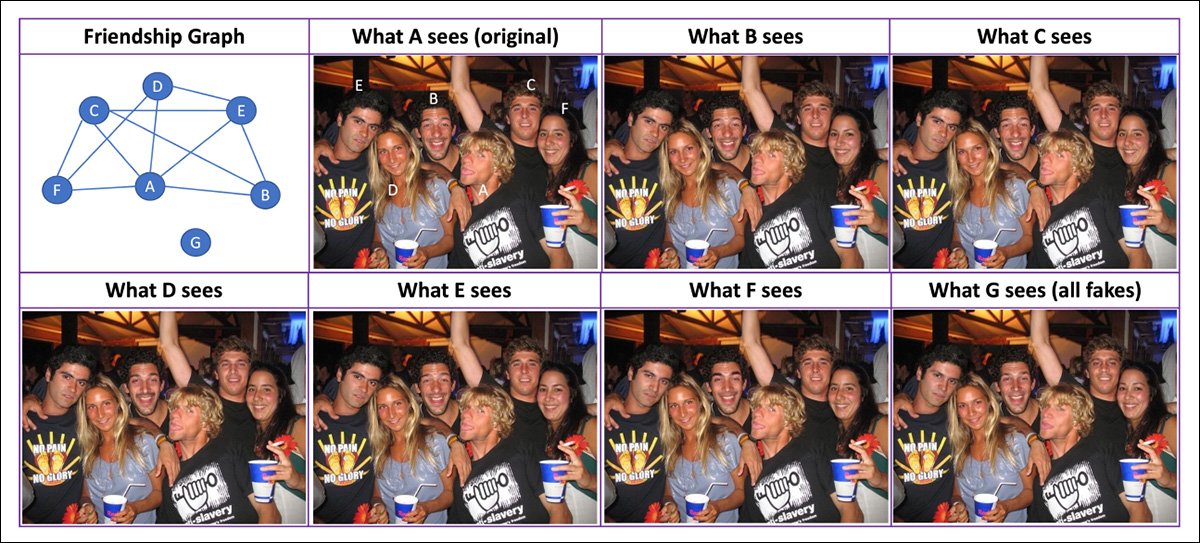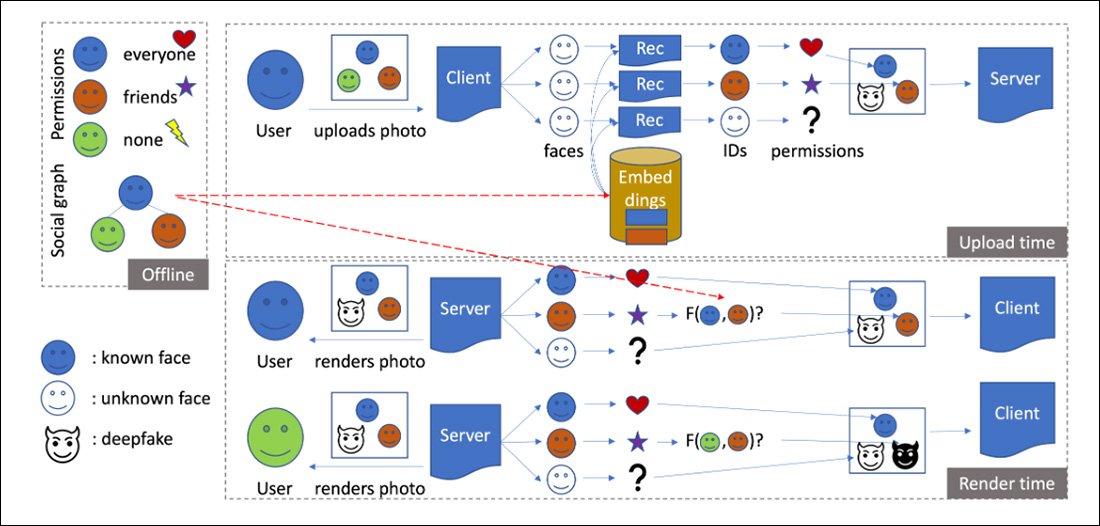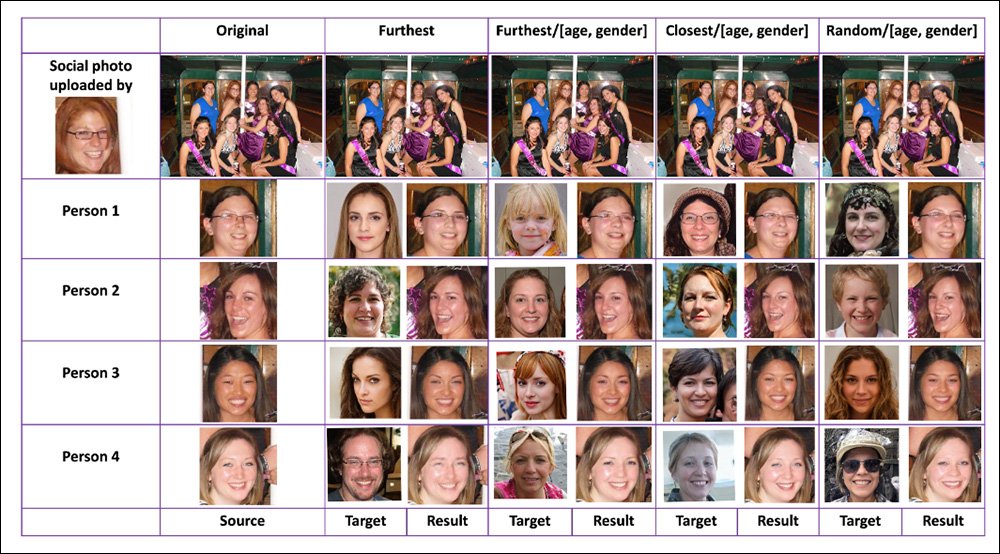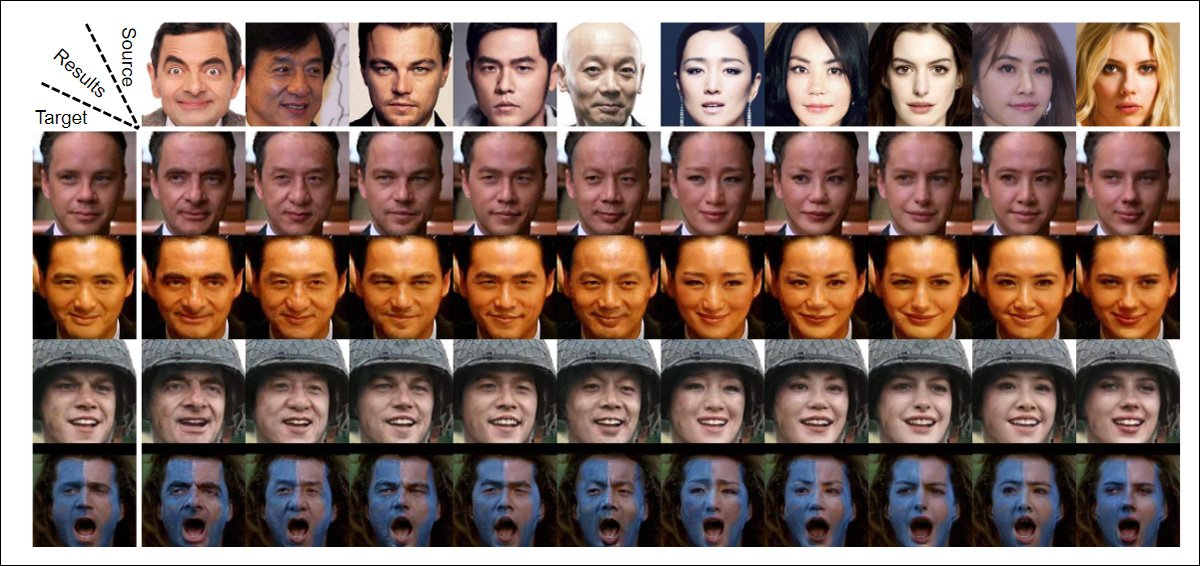A New Social Image-Sharing System Deepfakes All People by Default
A new collaboration between Binghamton University and Intel offers a novel take on the problem of the unauthorized use of social media photos for facial recognition purposes, as well as AI and deepfake training – by using deepfake techniques to subtly alter the appearance of people in posted photos, so that only their friends and permitted contacts are able to see their original face images.

The new paper, titled My Face My Choice: Privacy Enhancing Deepfakes for Social Media Anonymization, proposes various 'face-access' models capable of replacing 'unapproved' faces with quantitatively dissimilar faces – though the faces created retain the gender, age, pose and basic disposition of the original people depicted.The system is designed to be adoptable by existing social networks, rather than to constitute the basis of a novel social network.My Face My Choice (MFMC) alters the image on upload so that by default, 'outsiders' see all the faces in it as broadly representative deepfakes. The transformations are effected by ArcFace, a 2022 project led by Imperial College London. ArcFace extracts face embeddings with 512 features, but also optimizes feature embeddings so that the derived face has approximate visual parity with the 'overwritten' face, without allowing extractable (real) features to be copied over to the amended photo.In the new framework, gender and age classifications are performed by InsightFace. However, the classification that InsightFace makes is not exposed as public data, but rather is used as a direction in the latent space of the image synthesis system that powers MFMC.Under MFMC, only the submitter can decide to reveal their real face in the image. Any friends or other people in the photo who wish their real face to be revealed have to ask the submitter to 'unlock' that face.

The system also allows identities which are tagged by the user to be revealed, with the tag acting as a default 'unlock' of the face. When the tag is removed, the face is replaced by a deepfaked face.

Multiple Deepfake Approaches
The objective of MFMC is to avoid storing real identities, which is in opposition to traditional autoencoder-based deepfakes such as DeepFaceLab and FaceSwap, which trains on two datasets, each of which contains images of a real person.Therefore the researchers have incorporated four separate approaches into MFMC: a technique developed in 2017, for a project led by the Open University of Israel, which uses only a standard fully convolutional network (FCN) to effect face transfer between subjects, without storing identity information, and aided by Poisson Blending; the better-known 'few-shot face translation' model FTGAN, which uses unsupervised image-to-image translation powered by NVIDIA's SPADE framework; FSGAN, an Israeli academic collaboration from 2019, a two stage subject-agnostic architecture that uses facial inpainting to insert a substituted face; and SimSwap, a 2021 initiative from China, which adapts traditional autoencoder deepfakes to accommodate arbitrary faces.

Data and Approach
Though the researchers ultimately selected InsightFace as the face detection module, rejecting Carnegie Mellon's OpenFace and Google's FaceNet, the detector can be easily swapped out to fine-tune the balance between speed and accuracy.Both training and inference processes are run on a NVIDIA GTX 1060 GPU, while a generalization suitable to typical user uploads was found in the 'party' subset of the Facial Descriptors Dataset.

The Facial Descriptors Dataset consists of various configurations of 1282 people across 193 images, at diverse resolutions, lighting conditions, and in variegated poses.To generate a corpus of deepfake imagery on which to help train and calibrate the system, the researchers used two datasets: one containing 10,000 fake faces generated by StyleGAN, and another containing a further 10,000 faces originated by generated.photos.The targeted use of similarity metrics is crucial to ensuring that the basic group composition of an uploaded photo is retained, while also making certain that the individual faces are not so similar to the source faces that they could potentially be used as trainable material to reproduce the real identities depicted.Different methods of evaluating similarity place emphasis on different characteristics. Below we see the varying results when we're looking for a face that's similar to the source face (top row), according to different methods, including Fréchet inception distance (FID), Root Mean Square Error (RMSE), Structural Similarity Index Measure (SSIM), Peak signal-to-noise ratio (PSNR), and native embedding distance.

As we can see, the different metrics measure dissimilarity in different ways, with PSNR favoring color, SSIM and RMSE favoring head-pose, and FID creating some of the most extreme counterpoints to the original image, notably in the change of age-range.
Tests
Testing MMFC involved ensuring that the transformed identities could not be picked up by facial recognition systems that would ordinarily be capable of doing so. Achieving this goal also signifies that the original faces cannot be reconstructed by training them into image synthesis systems such as autoencoder deepfakes or latent diffusion frameworks.The output from MFMC was tested against seven state-of-the-art facial recognition systems: DeepID, OpenFace, DeepFace, FaceNet, DLib, and ArcFace. The test data was 1282 faces in 193 images, this time generated by MFMC.

Scores this low are scarcely better than chance, even though, as can be seen by the examples of MFMC earlier in this article, the faces appear to have high resemblance to the original source photos. This illustrates the extent to which facial recognition (and reproducible identity characteristics) relies on low-level structural features in faces, and that moving or altering these features can produce a striking similarity that, to the human eye, is still 'not quite right'.The paper concludes*:
'FMC also demonstrates a responsible use for deepfakes by design, especially for protecting faces of minors and vulnerable populations, in contrast [to] dystopian scenarios.'
And continues:
'We believe that current social media platforms would free the users if similar approaches to MFMC are implemented for face privacy and contextual integrity.'
The Face of the Future?
MFMC may seem an extreme solution to the problem of publicly available images of people being exploited for deepfake or image synthesis systems; however, it's only a more granular application of user-access rights systems currently in place for a social media site such as Facebook, where users can hide channel content selectively from people that they are not connected to, as they prefer.In terms of the change to user experience, one can consider that all the participants in a group photo of themselves will all see their original faces from the photo, with no deepfaked faces present; and that a user who is connected to one friend in the photo will see their friend's original face, and an approximation of the other faces (and presumably, only the friend's face is of interest to that viewer, else they would already be connected to the six 'deepfaked' people standing around their friend).At the same time, any itinerant web-scraper that managed to cajole its way past a platform login, or which is making use of 'publicly available' images from the platform, will either get the real faces that the people in the photo have willingly surrendered, or a group of faces that don't exist (which is abstractly useful for latent diffusion and other 'imaginative' image synthesis training, but completely obstructs ad hoc facial recognition web-scrapers).* My conversion of the authors' inline citations to italics.


